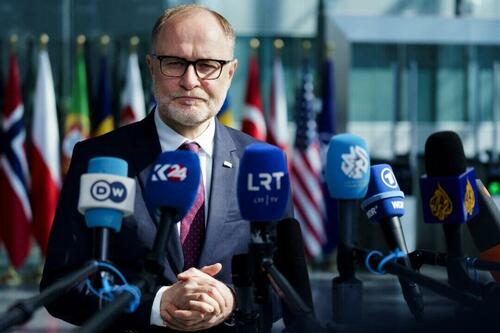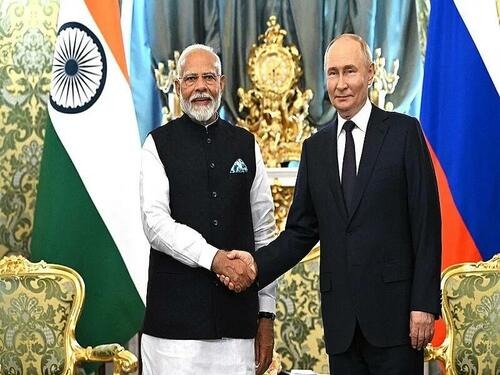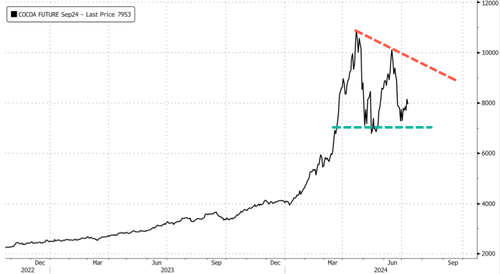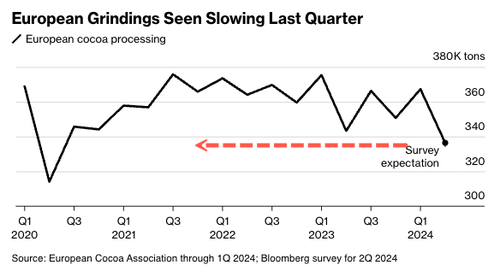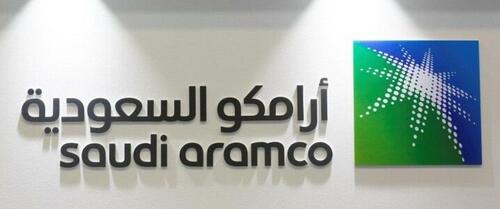Authored by James Rickards via DailyReckoning.com,
Myths die hard. Among these is the great myth that China’s poised to take over the world. Today I’ll debunk that myth.
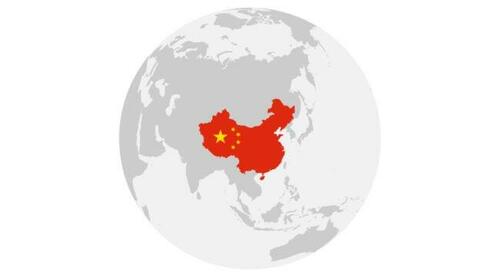
No one seriously disputes the importance of China to the global economy. It’s the world’s second-largest economy after the U.S. and accounts for 17% of global GDP (or an even larger percentage if one uses an alternative accounting method called purchasing power parity).
It has the world’s second-largest population at 1.41 billion people, just slightly behind India. It has the third-largest landmass in the world behind Russia and Canada. China also has the world’s third-largest nuclear arsenal after Russia and the U.S.
But size can be deceptive. Most observers translate China’s large economy into the status of global superpower soon to surpass the U.S. in economic and military strength.
That extrapolation has been a chimera for some time. In reality, China’s economy is fragile and weakening by the day.
China may soon find itself in economic turmoil including a credit crisis, currency crisis and economic recession all at the same time. Following is a close look at China’s inherent weakness. Unfortunately for U.S. investors, China’s problems threaten to drag the global economy down with it.
The China Myth
China’s economic problems exist at two levels — the long-term macro level and the short-term technical level. Let’s consider these in order: At the long-term level, China is confronting three material obstacles — the middle-income trap, declining demographics and wasted investment.
The middle-income trap afflicts developing economies that have reached the middle-income level of about $10,000 per capita annually. Moving from low-income (about $5,000 per capita annually) is straightforward.
Countries move populations from rural to urban environments, build suitable housing and infrastructure, attract direct foreign investment with cheap labor and low operating costs, engage in assembly-type manufacturing and run significant trade surpluses by exporting the manufactured goods.
The difficulty is in moving from middle-income to high-income ($20,000 per capita annually or higher). For that, low value-added manufacturing isn’t enough. It’s necessary to move to high-tech, high value-added manufacturing, which requires original research and development and access to high-tech tools such as semiconductor manufacturing equipment.
China has acquired some of these tools through theft of intellectual property, but not enough. China also faces fierce competition from those already engaged in high-tech manufacturing including Taiwan, South Korea, Singapore and Japan.
Only a handful of countries have ever made the move from middle-income to high-income, including those just mentioned. Many more including Turkey, Malaysia, Indonesia, India and South Africa are stuck in the same middle-income trap as China.
The prospects of China breaking out of the middle-income bracket are slim, especially now that foreign direct investment is moving toward India and Vietnam and away from China. This conundrum alone is enough to put the brakes on Chinese growth.
China’s Demographic Disaster
China is also confronted with what will become the greatest demographic disaster since the Black Death in the 14th century. This is the bitter fruit of China’s one-child policy from 1980–2015 combined with mass infanticide of girls. The demographic challenge is increased by greater educational and career opportunities for women, which impacts family formation, and an historic shift in the role of the family.
China’s population may decline from 1.41 billion to 750 million over the next 50 years. That’s a loss of over 650 million people.
Considering that one definition of GDP is working-age population x productivity, it follows that China’s GDP will suffer a spectacular decline over the remainder of this century. (Note: The total GDP will decline but per capita GDP may be maintained because the population itself is shrinking.)
Finally, China has wasted much of the wealth it did earn during the past 30 years with bad investments in unneeded infrastructure. A mature economy devotes about 25% of GDP to new investment (plant, equipment, homes, transportation, etc.) and about 65% to consumption. (The remaining 10% is split between trade surpluses or deficits and government spending.)
In China, that split is reversed. About 45% of GDP goes to investment and only about 25% goes to consumption.
That amount of investment can lead to high productivity gains in the future if it is spent intelligently on essential infrastructure, transportation, high-tech plants and equipment as well as research and development.
Instead, China wasted the money on “ghost cities” (ample infrastructure with no residents or business tenants) and extravagant white elephants such as the Nanjing South train station, which has marble walls and 128 escalators but very few train passengers.
Such show projects do produce short-term jobs and demand for copper, glass, steel and aluminum. But when the project is finished, the jobs disappear (unless diverted to another wasteful project) and the infrastructure is nonproductive with high maintenance costs.
If Chinese GDP were adjusted for losses due to wasted investment in accordance with generally accepted accounting principles, the reported growth figures of the past 30 years would have been reduced 20% or more. Those losses are real whether the figures are adjusted or not.
A Dead End for China
Based on these three factors — the middle-income trap, declining demographics and wasted investment — the so-called Chinese miracle has turned into a dead end.
China’s failing growth engine is not due solely to these long-term factors. Among the short-term headwinds to growth are an excessive debt-to-GDP ratio, a drying up of direct foreign investment, a dollar shortage and a rapidly declining currency.
Harvard economists Carmen Reinhart and Ken Rogoff have demonstrated that debt-to-GDP ratios in excess of 90% will reduce the Keynesian multiplier of additional debt-financed government spending below 1.0.
This means that for economies in that condition, if they borrow a dollar and spend a dollar, they receive less than a dollar of added GDP. Of course, this process drives the ratio even higher (since the GDP denominator grows more slowly than the debt numerator), which slows growth even further.
In plain language, you can’t borrow your way out of a debt crisis.
China has one of the highest debt-to-GDP ratios in the world, well over 300%. (Much of this debt is buried at the provincial level or in state-controlled banks rather than sovereign bonds, but the debt/growth dynamic is the same.) This debt overhang will retard Chinese growth independent of the other factors mentioned in this article.
Because of trade wars, tariff wars and deteriorating Chinese-U.S. relations, direct foreign investment is being diverted from China to other high-growth centers, including India. China’s ample (but declining) labor force cannot be productive without foreign direct investment to fund state-of-the-art manufacturing facilities and new technology.
China is doomed to stagnate along the lines of the former Soviet Union without a continual supply of new capital and technology.
China’s dollar-denominated trade surpluses cannot fill the gap because those reserves are needed to service dollar-denominated debt of Chinese state-owned enterprises and to prop up Chinese bank balance sheets.
That’s the real reason why Chinese holdings of U.S. Treasury securities are declining. It’s not because China is “dumping” Treasuries. It’s because China must sell the Treasuries to obtain dollars to prop up its debts and to deal with a global dollar shortage.
Get out of Chinese Stocks
All of these negative trends are expressed in the rapid decline of the USD/CNY exchange rate. After hitting an interim peak of 7.10 to $1.00 on Jan. 31, 2024, the Chinese yuan broke through a central bank target of 7.25 in mid-June and is now trading at 7.27. CNY will continue this decline, perhaps hitting 7.30 to $1.00 in the weeks ahead.
A crashing currency is not as advantageous for exports as many imagine since China’s value added on exports is only about 5%. It has to import most of the inputs it uses to manufacture exports from Japan, South Korea, Germany and Taiwan.
A declining currency increases the cost of those imports and reduces China’s competitiveness. It also makes foreign direct investment less attractive and hurts China’s efforts to move to a consumer economy by causing inflation on imported goods.
It would be a serious matter if China were slowing rapidly and the problems were confined to China. They’re not. Slower growth in China hurts Japanese banks, which are heavily invested there. It hurts South Korean, Taiwanese and Australian exporters that rely on Chinese markets.
It also contributes to a global slowdown that’s already affected Germany, France, Japan and the U.K. And it hurts U.S. investors who are facing a wave of company failures and bond defaults.
The U.S. won’t be insulated from this global slowdown that threatens to become a global recession and financial crisis. U.S. investors should dump Chinese stocks and ETFs and reduce equity holdings generally.
We’re entering another “cash is king” stage with China leading the way.


